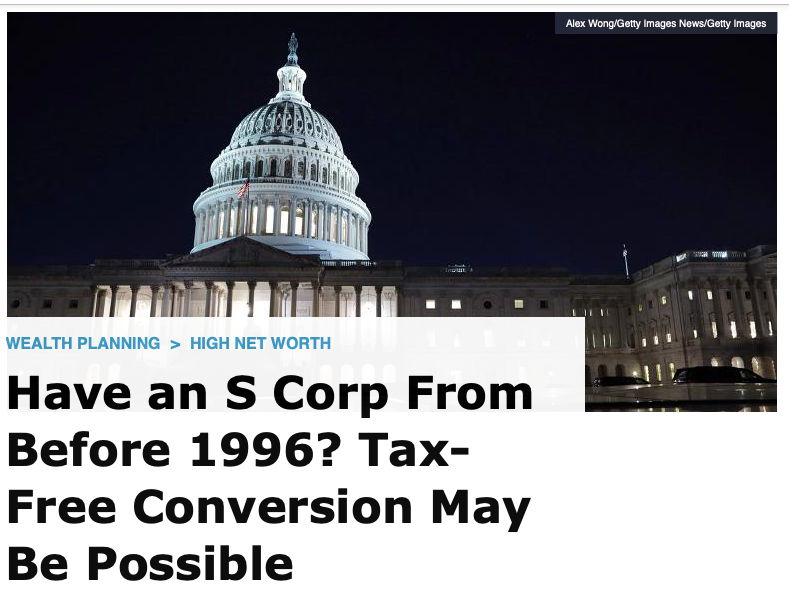Have an S Corp From Before 1996? Tax-Free Conversion May Be Possible
The United States Capitol lit up at night. -GETTY Images originally published wealth management.com
WEALTH MANAGMENT
A look at how the Build Back Better Act's key tax provisions affect partners, partnerships and other passthrough entities
The relief proposals that are to be acted on by the House of Representatives as part of “Build Back Better” reconciliation legislation (approved by a largely party-line vote of 24 to 19) can have significant impact on all those involved in an S Corp.
With that in mind, I’ve outlined below the bill’s key tax provisions that affect partners, partnerships and other passthrough entities by:
Expanding the net investment income tax;
Limiting the Section 199A deduction for qualified business income;
Modifying the current treatment of carried interest income by investment fund managers;
Modifying the limitation on deduction of business interest expense;
Changing the rules for losses related to worthless partnership interests;
Permitting certain S corporations to reorganize as partnerships without tax; and
Limiting qualified small business stock benefits for certain taxpayers
Differences between the House version of reconciliation legislation and forthcoming Senate tax proposals that are expected to be considered in coming weeks will have to be resolved before final legislation can be put to a vote in both chambers. Congressional Democratic leaders are seeking to complete action on the legislation so it can be signed into law by President Biden before the end of this year.
From an estate planning point of view, the temporary rule to allow certain S corporations to reorganize as partnerships without tax is the most interesting. Now, the conversion of an S corporation to an entity taxed as a partnership (such as a Limited Partnership or a Limited Liability Company) is a taxable event. Gain is recognized on the appreciation of any assets inside the S corporation and any of the stock surrendered. The bill would allow an “eligible S corporation” to convert to a partnership tax-free. An eligible S corporation is a corporation (including any predecessor corporation) that has been an S corporation at all times since May 13, 1996. The conversion would take place via a “qualified liquidation,” which is the transfer in a two-year period beginning on December 31, 2021, of substantially all the assets and liabilities of the S corporation to a domestic partnership in transactions that result in the complete liquidation of an eligible S corporation. The tax-free nature of the transaction is applicable only if the eligible S corporation elects to have the provision apply in a manner as the Treasury may require.
Also, while the S corporation conversion would be tax-free for federal income tax purposes under these proposals, it will be important to examine the state and local tax jurisdictions in which the S corporation operates. The deemed gains may be triggered for state and local tax purposes due to nonconformity to the current Internal Revenue Code as revised if this provision is enacted. State and local adoption of the Internal Revenue Code varies widely, but generally is on a rolling basis, a fixed-date basis, or select provision conformity. To the extent a jurisdiction does not adopt the Internal Revenue Code on a rolling basis, there could be unintended state and local tax consequences of an S corporation conversion.
This proposal allows those stockholders of S corporations that qualify a unique opportunity to shed the strict restrictions on who and what may own S corporation stock, what classes of stock and how income is distributed from the S corporation. This in turn opens up many of the types of planning that are currently unavailable to S corporation stockholders.
So, if you are a stockholder of an S corporation that has been an S corporation continuously since May 13, 1996 (or if you are looking to buy such an S corporation) you may have some interesting, if uncertain, options if and when the new tax reform passes.

